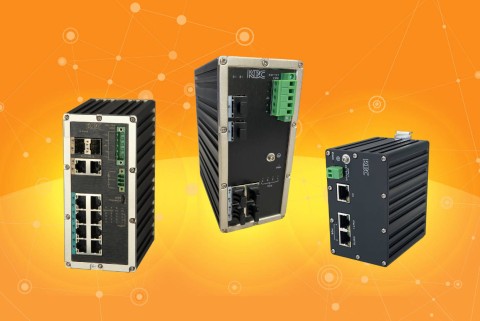Power over Ethernet (PoE): KBC Switch Options
When the IEEE first introduced Power over Ethernet (PoE) to the marketplace in 2003, it created quite a buzz throughout the electronics world over newfound systems possibilities and project cost savings. For security integrators, the ability to use a single Cat-5 cable to pass power and transmit data meant IP cameras and other edge devices could now be readily deployed. No longer were power supplies and related infrastructure needed to be installed in tandem at the site of these deployments.
IEEE’s first PoE standard (802.3af) provided up to 15.4W of DC power per port. As technology advanced, increased power demands would follow. Enter PoE+ (802.3at) six years later, and the ability to pass up to 30W over Cat-5 cable, with 25.5W available to devices. The standard would continue to be developed to meet ever-increasing wattage demands, and in 2018 PoE++ (802.3bt) arrived. Also referred to as High Power PoE or HPoE, PoE++ can pass up to 71W to a device. The increased wattage is transferred across all four twisted pairs, delivering high power at high speed, simultaneously.
Here’s a key factor that differentiates KBC switches over other similar appliances on the market: All KBC PoE switches actually offer 30W PoE+ on every port that outputs power, plus the switches can support all ports operating at PoE+. And no worries about total power budgets. Let’s pretend that you had an application that required 30W on each port — all of our switches are built to support that requirement.
Applications for HPoE
Let’s take a closer look at a few instances where this added wattage comes into play for installing security contractors, along with some of our network switch options.
Consider a multi-imager camera that offers optical zoom and motorized positioning, which can be easily maneuvered electronically with a GUI rather than directly manipulating lens positions manually on the camera itself. No need to climb a ladder! Just adjust the lenses and zooming as needed with the GUI and, voila, you have effectively fine-tuned a fixed-imager camera.
Just know that adjusting the lenses electronically does require a lot of initial power. Thereafter, the camera will draw minimal power, but that initial power requirement will need to be provided via PoE+.
Reasons to Use HPoE
Cameras with infrared (IR) sensors, among other features, may not need HPoE but still could require as much as 25.5W power input. In these instances, 30W of power input can be provided from multiple KBC appliances, including the ESUG2S-G1-B and ESUGS4-G1-B. The ESUGS4-G1-L-B — geared for solar kits because it powers via 9-36VDC — also provides PoE+ up to 30W per port. (Keep in mind: Any device that requires more than 30W PoE+ would either need an injector or a hardened switch that offers HPoE output.)
Our ESUGH2-G1-L-B HPoE switch — also ideal for solar and other remote power applications — requires 54V input. The NDR-120-48 and NDR-240-48 power supplies we sell can be adjusted by installers using a voltmeter from 48V up to 54VDC output. When using the ESUGH2-G1-L-B with a KBC mobile surveillance system (MSS) or another solar power system, this high performance switch will actually power via 12~24VDC from the batteries, but output the 54V HPoE on two ports.
Not sure which switch is the right one for you? Check out our Switch Comparison Tool here.
When you subscribe to the blog, we will send you an e-mail when there are new updates on the site so you wouldn't miss them.


